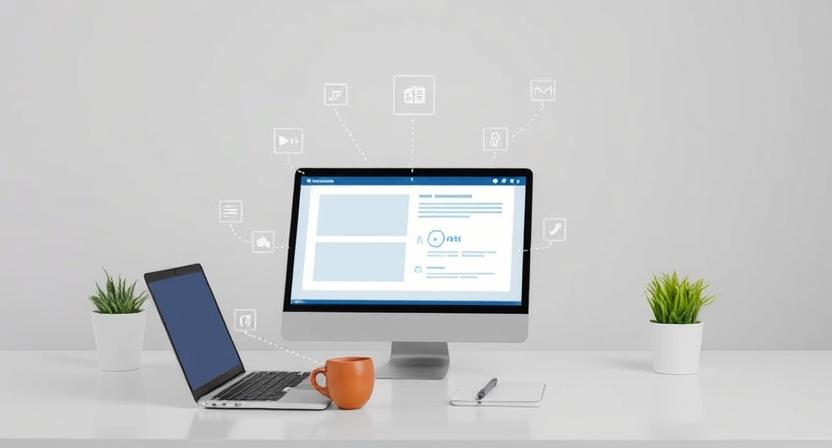Prototyping
Prototyping is creating early models to test ideas and refine designs before coding. Using tools like Figma, it boosts feedback, team alignment, and efficiency, turning concepts into tangible, user-focused solutions.

Prototyping: Turning Ideas Into Tangible Solutions
In the dynamic world of web and mobile app development, "prototyping" is a buzzword you’ll hear often—but what does it really mean, and why is it so critical? At its core, prototyping is the process of creating early, tangible versions of an app or website to test ideas, gather feedback, and refine the product before full-scale development begins. It’s like sketching a blueprint for a house—you wouldn’t pour concrete without knowing the layout works. Let’s unpack what prototyping entails and why it’s a cornerstone of successful app creation.
What Is Prototyping?
Prototyping is the act of building a simplified model of a web or mobile app to simulate its design, functionality, or user flow. These models range from low-fidelity sketches (think wireframes or paper drawings) to high-fidelity interactive mockups that mimic the final product’s look and feel. Tools like Figma, Adobe XD, or InVision make this process accessible, letting teams craft clickable prototypes without writing code.
In web development, a prototype might showcase a site’s navigation or layout responsiveness. For mobile apps, it could simulate swipes, taps, or feature interactions—like a checkout flow or onboarding sequence. The goal isn’t perfection; it’s exploration—testing assumptions, visualizing concepts, and identifying flaws early.
Why Prototyping Matters
Prototyping is a bridge between imagination and reality. Here’s why it’s invaluable:
- User Feedback Early: Share a prototype with stakeholders or test users to see if the navigation makes sense or the design delights. Catching issues here is cheaper than rewriting code later.
- Clarity for Teams: Developers and designers align on a shared vision. A prototype reduces miscommunication—everyone sees the same clickable plan, not just abstract specs.
- Faster Iteration: Spot what works (or doesn’t) before heavy lifting begins. Adjust a button’s placement or scrap a feature in hours, not weeks.
- Cost Efficiency: Fixing a prototype is pennies compared to overhauling a fully built app. It’s risk mitigation in action.
How It Works in Practice
Picture a team building a fitness app. They start with a low-fidelity prototype—sketches of a workout tracker screen. Using Figma, they evolve it into a high-fidelity version: clickable buttons, a progress bar, and sample data. Testers try it, revealing the "start workout" button’s too small. The team tweaks it, retests, and finalizes the design—all before coding starts. For a web project, like an e-commerce site, a prototype might test if users can find the cart across devices, ensuring responsiveness.
Types of Prototypes
- Low-Fidelity: Quick sketches or wireframes focusing on structure—great for brainstorming.
- High-Fidelity: Detailed, interactive models with visuals and flows—ideal for user testing.
- Functional: Rare in early stages, these include light coding to test specific mechanics.
Tools and Trends
Tools like Sketch, Figma, and Proto.io dominate, offering drag-and-drop simplicity and real-time collaboration. Emerging trends—like AI-driven prototyping or VR previews—hint at a future where prototypes feel even closer to the real thing.
Limits to Consider
Prototyping isn’t a cure-all. It won’t solve backend complexities (e.g., database design) or predict scalability. Over-focus on polish can also delay progress—balance is key. It’s a stepping stone, not the final app.
The Takeaway
In web and mobile app development, prototyping is the art of failing fast to succeed sooner. It turns abstract ideas into testable realities, saving time, money, and frustration. Whether you’re a designer mocking up a homepage or a startup testing an MVP, prototyping ensures your app doesn’t just launch—it lands. Next time you brainstorm an app, start with a prototype—it’s your idea’s first step to life.
About the Author
Hina Firdause is a seasoned professional with over eight years of experience in product strategy, cross-sell optimization, and process improvement. Currently based in Bengaluru, she works with Niti AI, where she leverages her expertise to drive innovative solutions. She holds an MBA from the prestigious IIM Kashipur. Passionate about technology and business, she actively engages in discussions on emerging trends, including no-code platforms and fintech disruptors, offering insightful perspectives drawn from her extensive industry experience.
